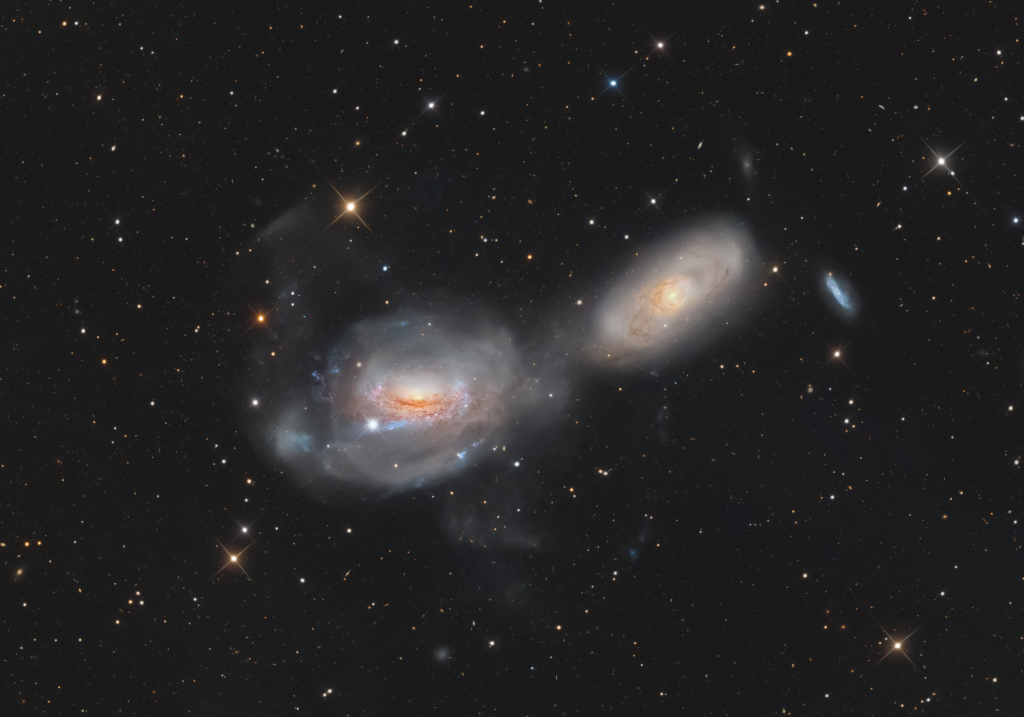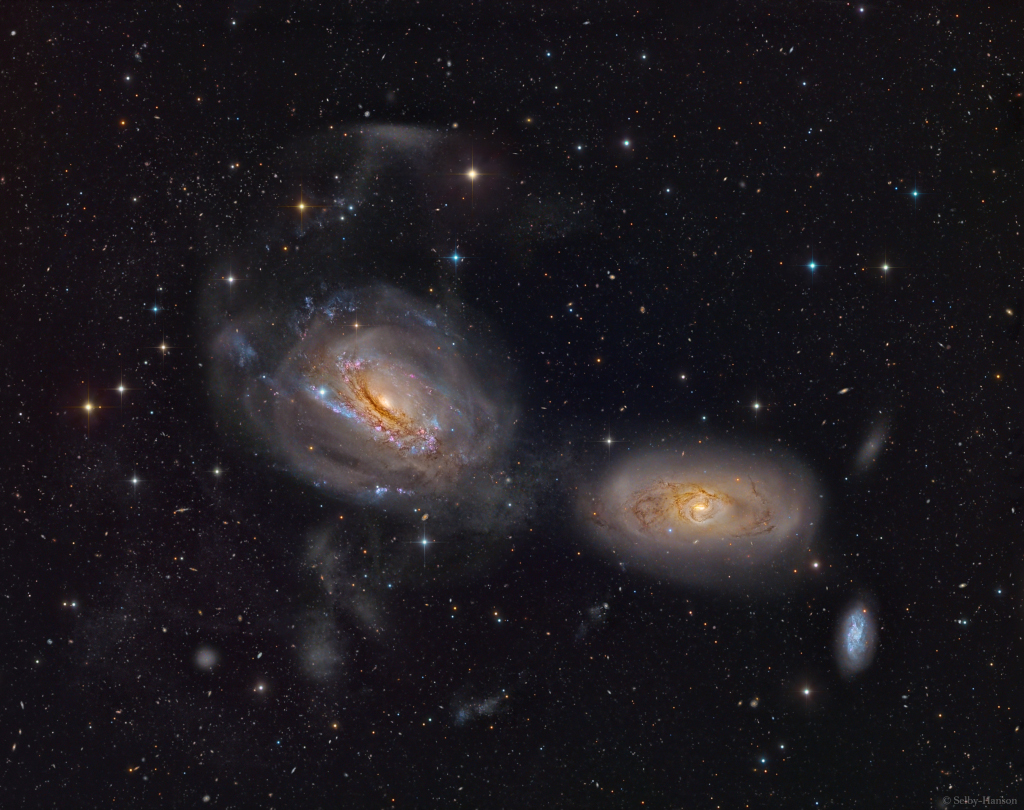Unraveling NGC 3169
Image Credit & Copyright: Christophe Vergnes, Aziz Kaeouach
NGC 3169 and NGC 3166 are indeed an interesting pair of galaxies! They used to be normal spiral galaxies for sure, but now one of them (NGC 3169) is indeed "unraveling", and the other one is in the process of losing its spiral galaxy characteristics altogether.
You have to look at this "inverted light" picture of NGC 3169 and NGC 3166 by Mark Hanson and Martin Pugh, which really brings out the "contours" of NGC 3169 and NGC 3166!
Inverted image of NGC 3169+NGC 3166, which brings out the contours
of the galaxies very strongly. Credit: Mark Hanson & Martin Pugh.
NGC 3169 and NGC 3166 are very close to one another. They have undoubtedly been interacting for a long time, chafing away at one another, disturbing each other's cold molecular clouds, upsetting one another's dust lanes and eating away at each other's abilities to form new stars. NGC 3169 still contains streaks of blue and even a few pink emission nebulas, but its sites of star formation have been drastically reduced. And NGC 3166 has no obvious sites of star formation at all, although it does have a ring of relatively young stars around its nucleus. And a strange bluish "jet" appears to emerge from it, pointing down and to the left!
The picture above is a GALEX ultraviolet image, where blue means light from hot stars of spectral classes A-O, and yellow means light from cool stars of spectral classes F-M. (Well, roughly.)
You can see the blue arms of NGC 3169. You can also see a small, faintly bluish ring around the core of NGC 3166, while the disk of NGC 3166 is faint and all yellow. But do note the bluish "jet" that seems to emerge from NGC 3166, pointing down and to the left. According to
this site, both NGC 3169 and NGC 3166 have active black holes, and I have to wonder if the jet-like feature emerging from NGC 3166 is a remnant of an outburst of that galaxy's black hole.
The supermassive black hole of giant elliptical galaxy M87 produces just such a bluish jet, although we should not pretend that the black hole of NGC 3166 is in any way comparable to the monster black hole in M87! We don't even know if that jet-like thing seemingly emerging from NGC 3166 is a jet in the first place, or, if so, if it has anything to do with the black hole of NGC 3166. Meanwhile, let's enjoy the jet of M87!
Ann
 Unraveling NGC 3169
Unraveling NGC 3169










